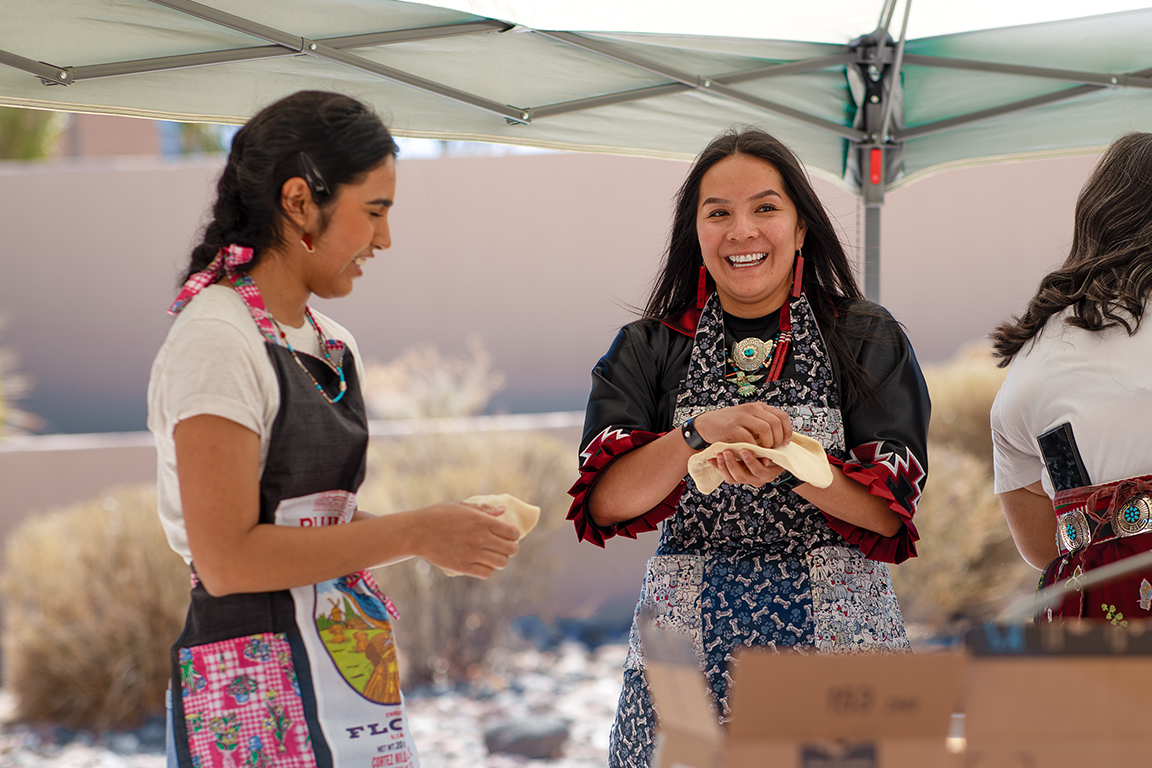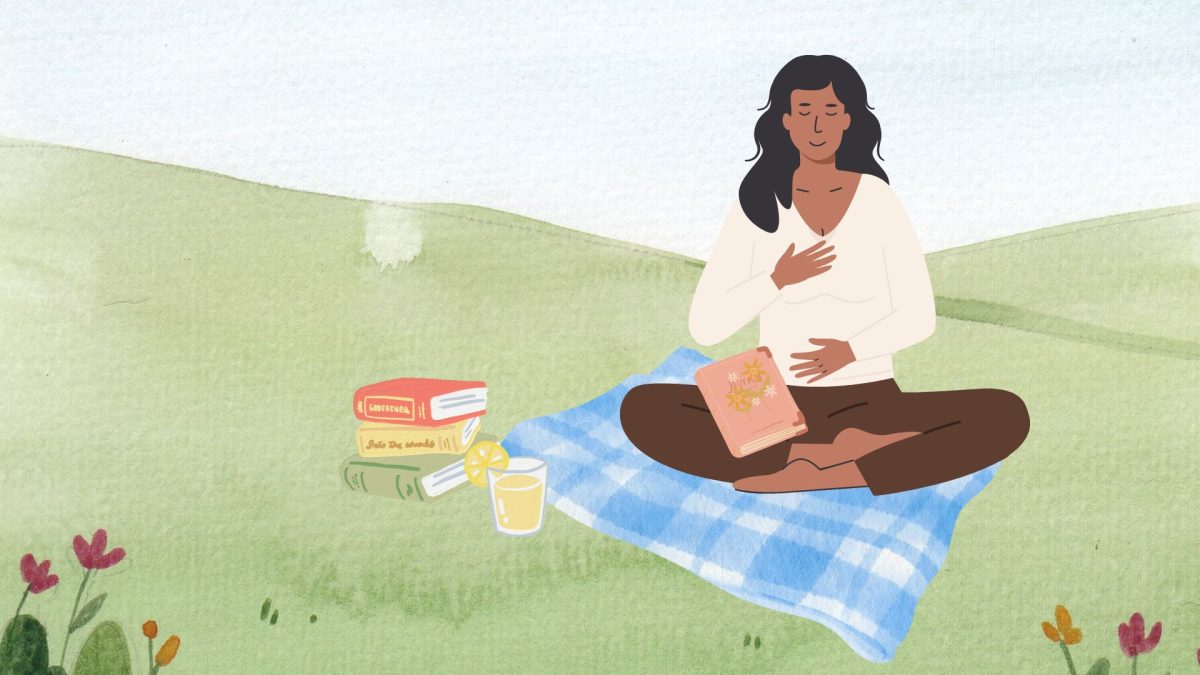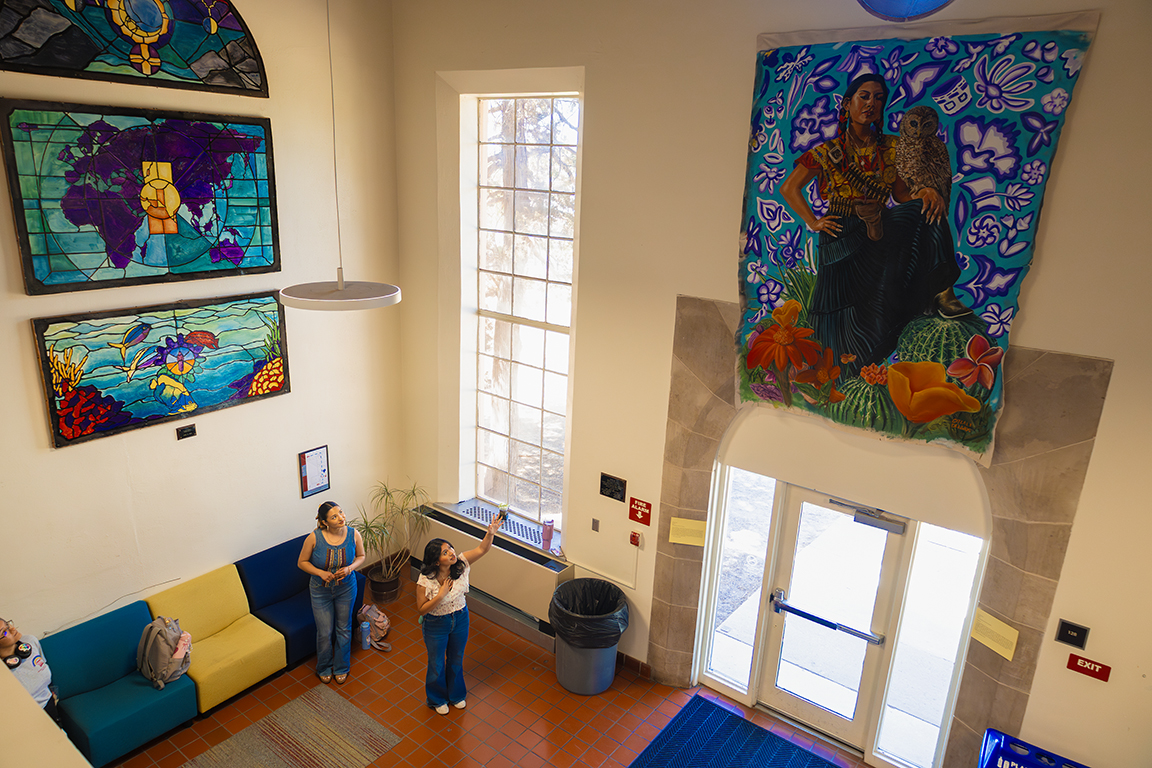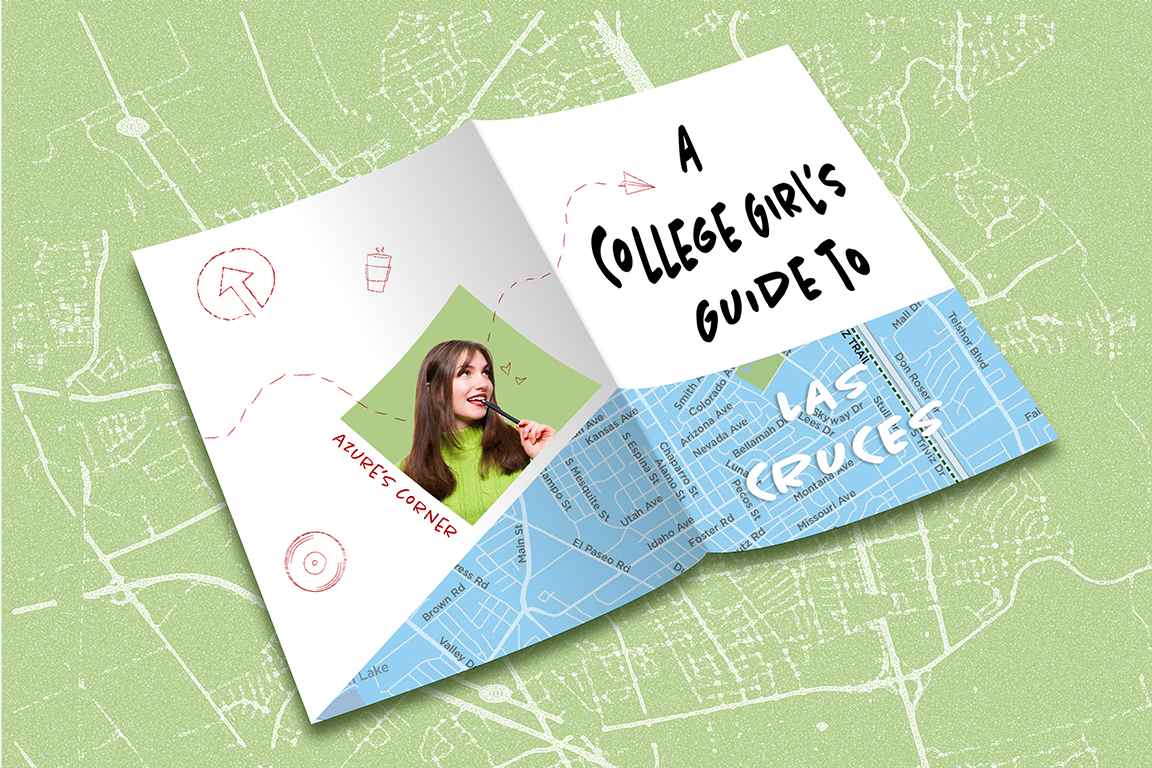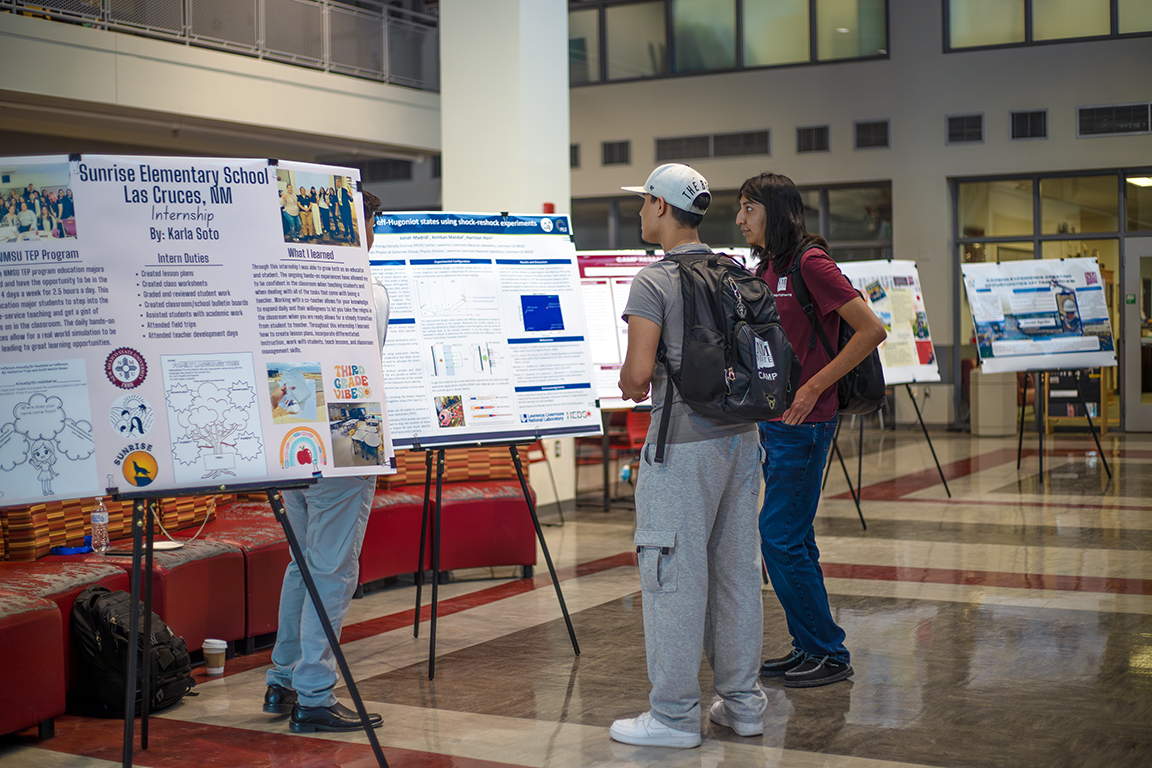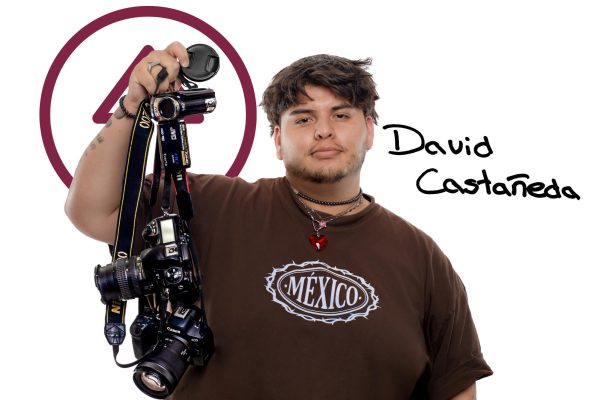For some, it was a bite of a different culture, while for others this was a taste of home. In celebration of American Indian week, New Mexico State University’s American Indian Program hosted a luncheon serving Indian tacos at the American Indian Student Center courtyard on Wednesday, March 19.
With a week of festive and informative events from March 17-22, the American Indian Program commemorated Native Americans everywhere through raising awareness, appreciating heritage, and honoring cultures.
In the middle of the week, the program welcomed the NMSU community to join them in their courtyard for Indian tacos, filled with beans, meat, and veggies enclosed in frybread and served hot and homemade by members of the program.
“… with the food, like, Indian tacos, of course, it’s back home. So, a lot of Native Americans will come here and say, ‘Hey, this is from back home,’” student Shaylyn Smith shared.
Smith is the former Miss Native American NMSU, who recently handed over her duties at the pageant on Friday, March 21. Smith was crowned in April of last year and since then has been continuing her journey of supporting her heritage and using her platform for further advocacy.
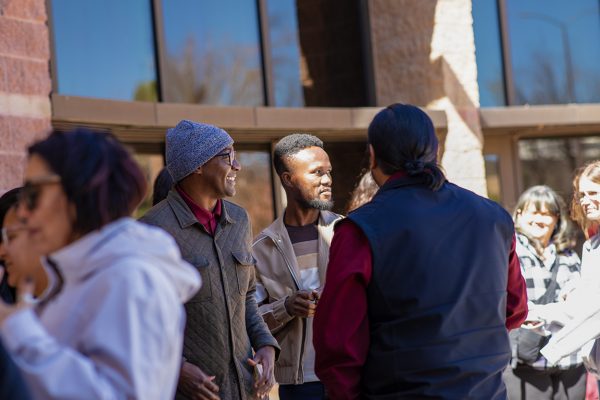
“Native Americans come away from the reservation to school; a lot of them go back right away just because it doesn’t feel like home,” Smith said. “And this is what we’re here to do, is to make sure that they have a second home out here when they leave the reservation.”
Smith expressed how this program has provided her and many other students with a safe space to be themselves and find solace in a home away from home. She said when the American Indian Program hosts events like this, students who come from the reservation often feel that sense of belonging. It can make home not feel so distant.
“It’s so relieving that we have, like, a second home coming over here, and it’s just — it’s really relieving that I’m able to support the Native Americans here,” Smith said.
Michael Ray, director of the American Indian Program, revealed that events like this have been in the works since he was a student at NMSU. He said watching the community flourish and providing a safe space have been some of the goals of his journey over the years.
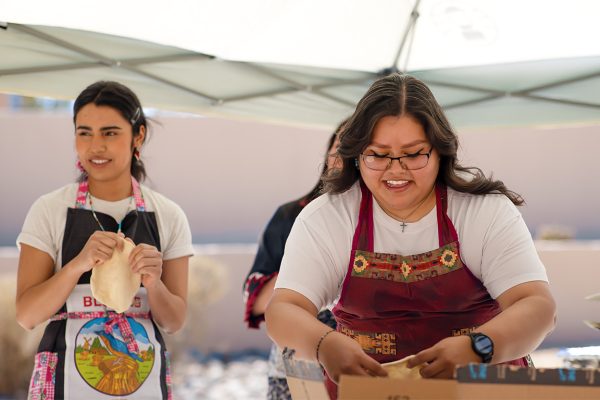
“Personally, for me, I mean, this is, this is a continuation of me when I first got to NMSU; the then-dean Carruthers of the business college asked me to assist when it comes to help bringing more … Native American students into the business college,” Ray shared.
This event was hosted not only to bring a community together, but to inform the public of what American Indian Week is all about. Some topics covered were the cultural shifts that occur when students have to move, the common misconceptions people have of Native Americans, and enlightening the community that the program is here to educate.
“We have students who may not have known about Native American communities, because maybe they’re [from a] very much urban area, or maybe it might be the paragraph that was in their history class when it comes to Thanksgiving,” Ray said.
Ray encourages people to ask any questions they may have about the culture. He said it’s important to their heritage to properly inform the public. The American Indian Student Center is surrounded by tinted windows, which some may see as a private location. Ray clarified the privacy glass is purely there to protect the artifacts from whatever damage the sun may cause.
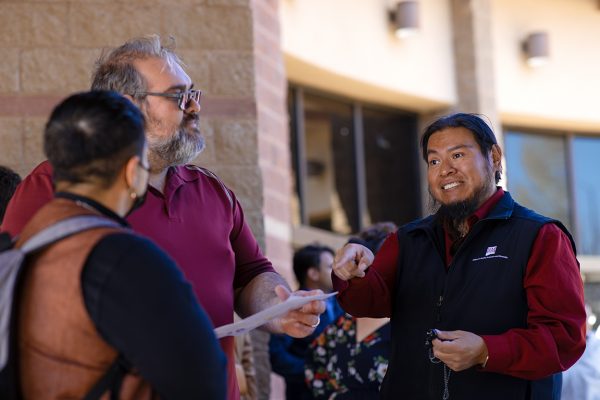
The program director seeks to nurture and educate the community. He wants to make sure that, with events like this one, everyone leaves satisfied and well-fed. He said this custom is passed on from generation to generation. In the homes of mothers and grandmothers, it is always seen as a necessity to have guests leave with a full belly or leftovers.
“There’s a lot of wonderful and amazing individuals that come from our tribal communities, and that’s what we try and highlight through American Indian Week,” Smith said. “Any of the events we have in the future, we welcome any students to come on out, any of our NMSU community to join us and learn more. Because the more that we learn about one another, the easier it is to look at other communities, and how we can be a part of every one of them.”


